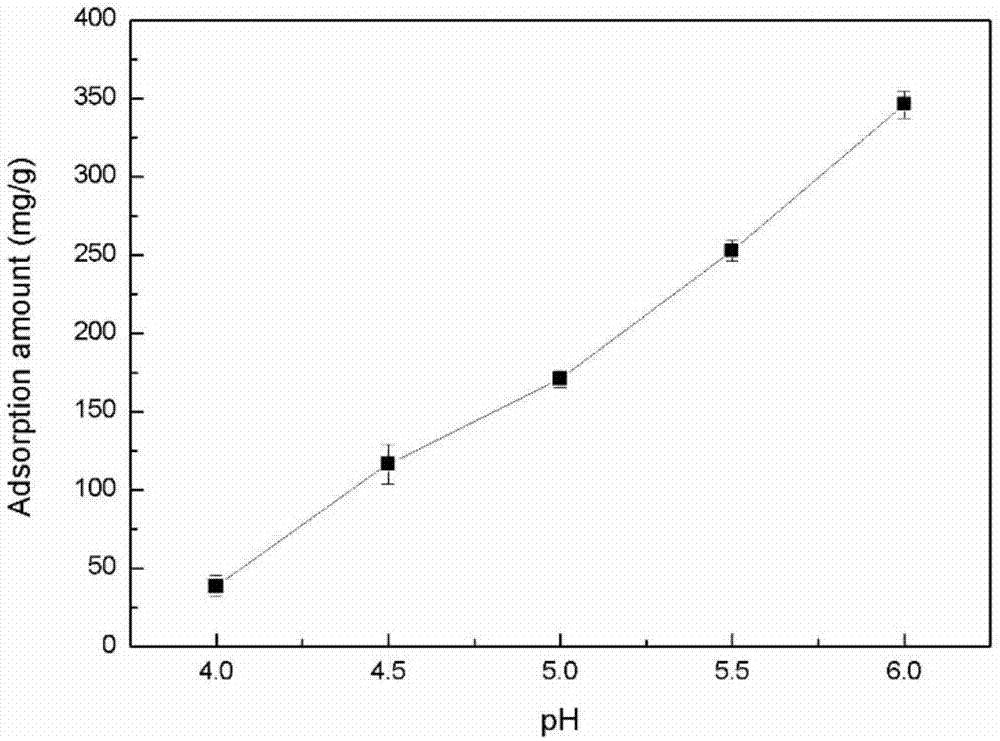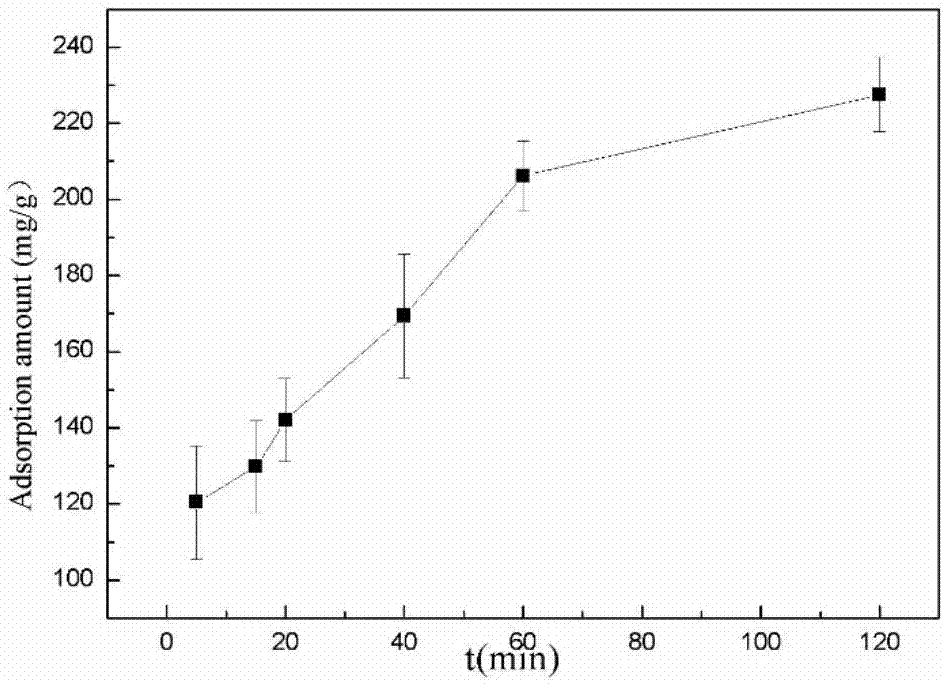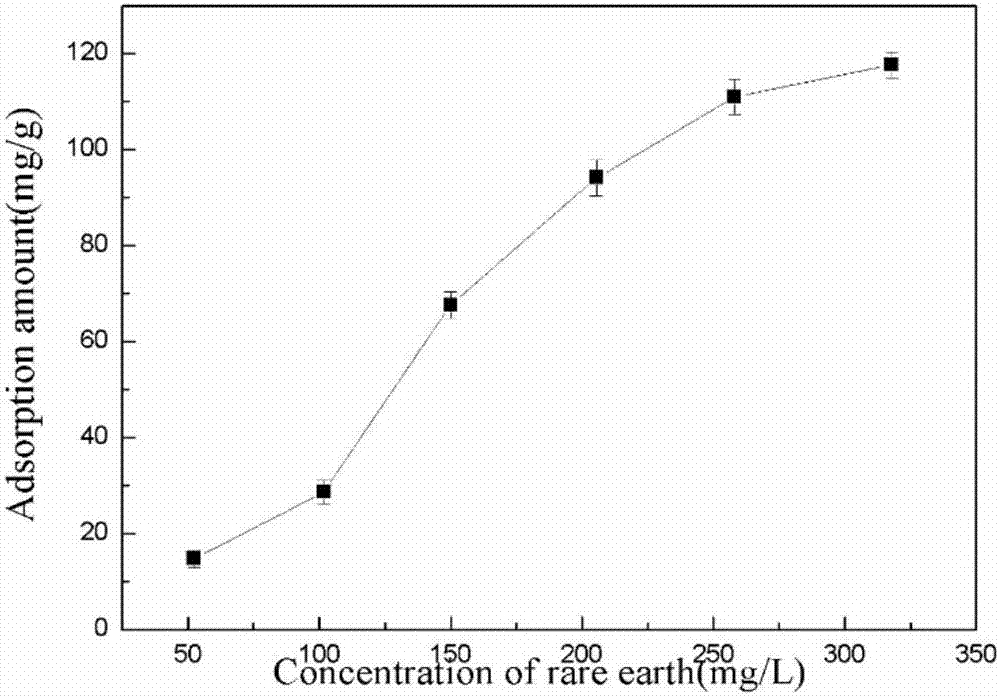Biological method for recycling rare earth from low-concentration heavy yttrium rare earth wastewater
A low-concentration, rare-earth technology, used in water pollutants, chemical instruments and methods, biological water/sewage treatment, etc., to achieve the effect of eliminating environmental hazards, being environmentally friendly, and the process being simple and easy to implement
- Summary
- Abstract
- Description
- Claims
- Application Information
AI Technical Summary
Problems solved by technology
Method used
Image
Examples
Embodiment 1
[0031] (1) Add about 0.25 g of Serratia marcescens (wet weight) to a 500 mL Erlenmeyer flask containing 250 mL of an initial concentration of 0.104 g / L rare earth solution, and adjust the pH of the adsorption solution to 4.0, 4.5, 5.0, 5.5 , 6.0, adsorbed in a constant temperature water-bath shaker at 30°C with a rotation speed of 200r / min for 1h.
[0032] (2) The adsorption solution was centrifuged at 4°C and 8 000×g for 20 min, and the cells adsorbing the rare earth ions were harvested.
[0033] (3) measure above-mentioned step centrifugation gained supernatant volume, measure supernatant rare earth ion concentration with EDTA complexometric titration, calculate rare earth ion desorption amount, the adsorption amount of Serratia marcescens under different pH conditions is as follows figure 1 shown.
[0034] From figure 1 It can be seen that within the pH range studied, the adsorption capacity of Serratia marcescens to heavy yttrium rare earth ions increases rapidly with th...
Embodiment 2
[0036] (1) In a 500mL Erlenmeyer flask containing 250mL initial concentration of 0.103g / L heavy yttrium rare earth solution, add about 0.25g Serratia marcescens (wet weight) respectively, adjust the pH of the adsorption solution to 5.5, and place Adsorption in a constant temperature water bath shaker with a rotational speed of 200r / min for 5, 15, 20, 40, 60, 120 minutes.
[0037] (2) The adsorption solution was centrifuged at 4°C and 8 000×g for 20 min, and the cells adsorbing the rare earth ions were harvested.
[0038] (3) measure above-mentioned step centrifugal gained supernatant volume, measure supernatant rare earth ion concentration with EDTA complexometric titration, calculate rare earth ion desorption amount, the adsorption amount of Serratia marcescens under different adsorption time is as follows figure 2 shown.
[0039] From figure 2 It can be seen that the adsorption capacity of Serratia marcescens to heavy yttrium rare earth ions increases with the increase o...
Embodiment 3
[0041] (1) In the 500mL Erlenmeyer flask containing 250mL different initial concentrations of heavy yttrium rare earth ion solutions, add about 0.25g of Serratia marcescens (wet weight) respectively, adjust the pH of the adsorption solution to be 5.5, at 30°C, the rotating speed is Adsorption in a constant temperature water bath shaker at 200r / min for 1h.
[0042](2) The adsorption solution was centrifuged at 4°C and 8 000×g for 20 min, and the cells adsorbing the rare earth ions were harvested.
[0043] (3) measure above-mentioned step centrifugation gained supernatant volume, measure supernatant rare earth ion concentration with EDTA complexometric titration, calculate rare earth ion desorption amount, Serratia marcescens to heavy yttrium under different initial rare earth ion concentration conditions The adsorption capacity of rare earth ions is as image 3 shown.
[0044] From image 3 It can be seen that the adsorption amount of rare earth ions by Serratia marcescens i...
PUM
| Property | Measurement | Unit |
|---|---|---|
| concentration | aaaaa | aaaaa |
| adsorption capacity | aaaaa | aaaaa |
Abstract
Description
Claims
Application Information
 Login to View More
Login to View More - R&D
- Intellectual Property
- Life Sciences
- Materials
- Tech Scout
- Unparalleled Data Quality
- Higher Quality Content
- 60% Fewer Hallucinations
Browse by: Latest US Patents, China's latest patents, Technical Efficacy Thesaurus, Application Domain, Technology Topic, Popular Technical Reports.
© 2025 PatSnap. All rights reserved.Legal|Privacy policy|Modern Slavery Act Transparency Statement|Sitemap|About US| Contact US: help@patsnap.com



